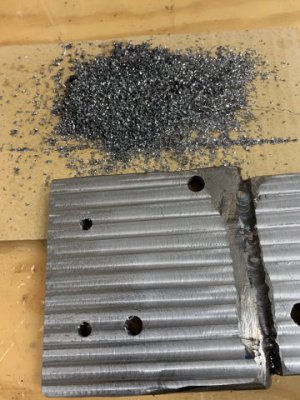I’m flattening a piece of I think 1018 steel for a chuck mount. Taking a .030 depth of cut with a 3/8 4 flute carbon end mill. All axis locked except direction of travel and very little end mill stick out. 800 rpm I am feeding by hand until I feel machine vibrate and then try and slow down a little. Does this seem like a reasonable cut for a 728 mill?
I am struggling as I have no experience to know when I am pushing the mill to hard. I understand how many of you listen to the machine to determine when you are in the sweet spot. Could someone explain a little more how they determine that? Is a little vibration ok or have I already pushed it to far at that point.
Thanks for any input.
I am struggling as I have no experience to know when I am pushing the mill to hard. I understand how many of you listen to the machine to determine when you are in the sweet spot. Could someone explain a little more how they determine that? Is a little vibration ok or have I already pushed it to far at that point.
Thanks for any input.
Last edited:


